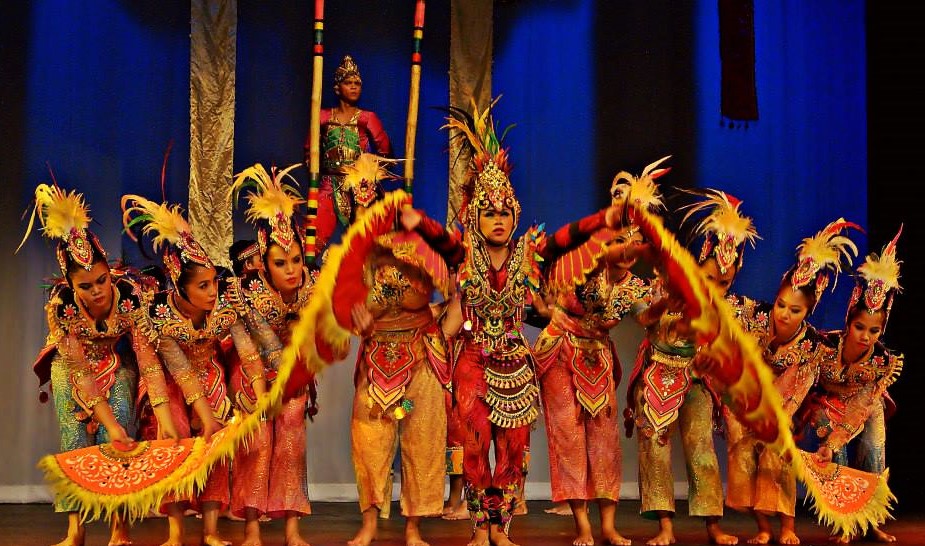
ABU International Dance Festival

ABU INTERNATIONAL DANCE FESTIVAL 2017
The first ABU International Dance Festival, which India’s Public Service Broadcaster, Prasar Bharati has the honour of hosting, is scheduled to be held on 15th January 2017 in Hyderabad, India. This is an independent festival that will grow in stature from year to year. It aims at introducing the unique diversities of the Asia Pacific region, breaking cultural barriers, and sharing the joys that varied communities across this region feel while they dance. The objective is to create a “bridge” between young people from different parts of the world, through dance as an international language, which could help in convergences and associations, social and artistic. All presentations will be by dancers between the age group of 18 to 25 years of age. The ABU International Dance Festival has been planned keeping young audiences in mind. As dance festivals go, this is a unique festival as it keeps two mediums in mind – stage and television. There are dance film festivals but a Television Dance Festival is a rarity.
Date: 12 – 15 January 2017
Venue: Hyderabad, India.

RTA-Afghanistan
|
(Traditional) |
 |
Uzundara(Traditional) Uzundara (Uzundərə) is one of the traditional lyrical dances of Azerbaijan performed by women. This dance gets its name from the Valley of Uzundara (“Long Valley”), a place in the Garabagh region,between Agdam and Goytapa. It was suggested as a dance of bride while they passed through this valley before their weddings. Then it became a wedding dance of the bride and symbolized her separation from the family home. By that time it has lost initial meaning and currently it is one of the most popular woman dances in Azerbaijan. This dance has a very nice lyric and soft music. |
| Ictimai – Azerbaijan | |
 |
Meke(Traditional Dance) Meke are the traditional dances of the indigenous people of Fiji. Men, women and children all participate in the meke, which is a combination of dance and repetitive rhythmic chanting, telling the stories of everyday life, ancient Gods or of battles won, special historical events such as the opening of New building or a church, celebration of a birth of child, a significant death in the family or just happy occasions and functions. Some mekes are performed seated and some standing, and during this performance, you will witness a Medley of both varieties. Indigenous Itaukei culture is very oral and they keep their stories, their history and their genealogy through traditional mekes. This particular meke is a medley of a historical event with celebrations of a happy occasion and an ancient tribal war story. |
| FBC – Fiji |
|
 |
Chaitanya(Contemporary) |
| DD – India |
|
 |
Andaz-e- Raqs (Traditional) |
| DD – India |
|

RRI- Indonesia
|
Bala Turangga (Traditional)Bala Turangga is a dance that is inspired by legendary elite horse troops that existed in Majapahit Kingdom era. In Sanskrit, Majapahit is also called as Vilvatikta. Majapahit Kingdom was the biggest empire in Indonesia which reached their supremacy around 14th century. The center of Majapahit empire was located in an area that is known as East Java in modern-day Indonesia. The territories of Majapahit was said to reach the area known as Malaysia, Singapore, Thailand and the Philippines in modern era. Bala Turangga dance expresses the greatness and power of Bhayangkari horse troops that consisted of men and women, who were the front troops during ancient era that the Majapahit relied on to reach their glory. The movement presented in the dance was originated from dynamic Javanese dances with a strong presence of the mystic sphere that embodies the great horse troops. The costumes and the make-up of the dancers was inspired by various Indonesian cultures delivered in modern style.
Kabaret Baliano(Contemporary) |
 |
Tari Saman(Traditional) Tari Saman is a traditional dance from Gayo in Aceh province (the east tip of Sumatra island) in Indonesia that is usually displayed to celebrate important events in the local practice. Tari Saman is one of religious mediums that reflect education, religion, manners, heroism, teamwork and togetherness, with its lyrics containing courtesy. The unique fact about this bells and whistles dance is that it is accompanied by the dancers’ voice combined with fast clapping on hands, chests and thighs. It is guided with a leader who uses tambourine to cue the dancers. Accuracy and promptness is required by the dancers to accelerate the harmony of Tari Saman. |
| TVRI – Indonesia |
|

PSM – Maldives
|
(Traditional) Journey with us on a festive passage into time, discovering the rich history and culture of the Maldives isles, depicted through age-old dances and beats, which has brought joy to Maldivians for hundreds of years. The smooth sways to the traditional beats of bodu beru, has been the core of Maldivian folklore and culture, taking dance and song through hundreds of variations that sprung all through the history of the two thousand isles. The performance has been organized by the Republic of Maldives and will portray a mixture of cultural presentations such as traditional forms of singing and various types of folk dances. All songs in the performance are sung in the native language, ‘Dhivehi’, which is unique to the Maldivian culture. The songs depict the honor and privilege of being an independent country that is able to follow their own culture, desired religion and way of life. It also describes traditional celebrations carried out on occasions such as Eid. |
.jpg) CTC – Philippines |
Singkil(Traditional) |
 CTC – Philippines |
Sarimanok(Contemporary) |

MTRK – Uzbekistan
|
Lezgi(Traditional) Every region in Uzbekistan has its own style and way of dances. One of them is “Lezgi”. Lezgi is a dance from the Khorezm region which is extremely popular not only in Uzbekistan but worldwide. They are energetic, rousing and very temperamental. In contrast to slow and quiet dances of Bukhara and Samarkand, Khorezm dances are initially very rhythmic, and the pace becomes irrepressible by the end of the dance. Perhaps, “Lezgi” is the most well-known Khorezm dance today. This dance is characterized by movements on bent legs, shaking with shoulders and hands with small bells attached. Commonly the Lezgi dance consists of three parts. The dance will start slowly and then the rhythm of the music and dance performance itself will speed up becoming faster and faster. This dance is performed by the two of our dancers. The main idea of this dance is the competition between the two dancers. In the first part performers dance together. In the second and third parts of the performance, the dancers compete to show their individual abilities to the audience. At the end their friendship will glorify and the third part will be performed together. |
 ASTRO – Malaysia ASTRO – Malaysia |
TBC |
Do visit http://aidf.prasarbharati.org/ for more information.
For more information, please contact:
Hanizah Mohd Hamzah (Mrs)
Head of TV
Tel: +603 2283 5187
Email: hanizah@abu.org.my

